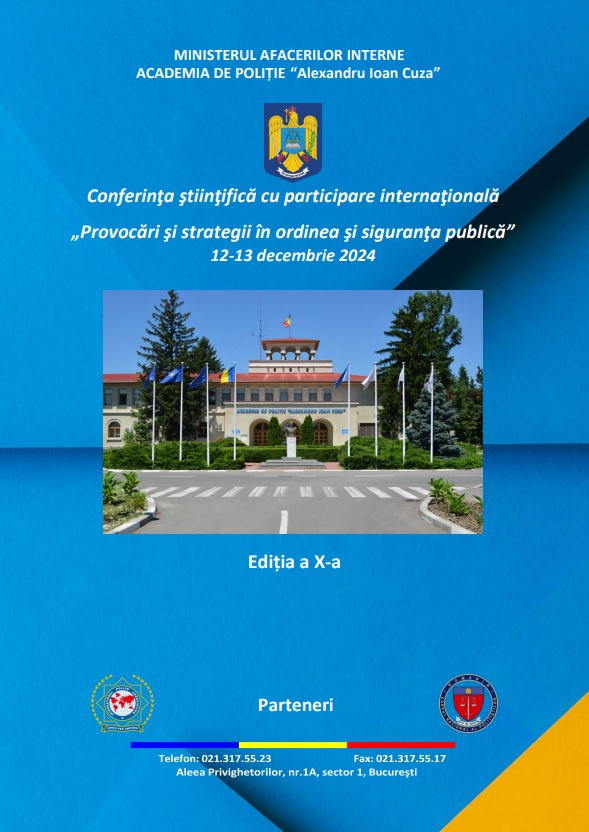PROCESUL DECIZIONAL ÎN SITUAȚII DE URGENȚĂ ÎN CADRUL STRUCTURII DE ORDINE PUBLICĂ
THE DECISION-MAKING PROCESS IN EMERGENCY SITUATIONS WITHIN THE PUBLIC ORDER STRUCTURE
Author(s): Andreea-Mălina Luncanu, Oana Mihaela VIȘAN
Subject(s): Law, Constitution, Jurisprudence, Criminal Law
Published by: Academia de Poliţie »Alexandru Ioan Cuza« Bucureşti
Keywords: public order; decision; street crime; emergency situation; emergency management
Summary/Abstract: The public order carries out analyzes regarding the evolution of crime in the fields of competence, especially street crime, and depending on the conclusions drawn, establishes various measures to increase the efficiency and effectiveness in preventing and combating it. Also, the public order structure participates directly in the organization and carrying out of missions to ensure public order and tranquility at public events with a high degree of risk and ensures the direct coordination of public order forces. In this context, the emergency decision-making process in the fields of the public order structure represents a concept under consideration for clarification and development, as well as for standardization at the national level.Overcoming the effects of emergency situations, such as detecting, catching perpetrators or intervening in events reported by citizens, requires an extensive and complex effort on the part of all the decision-making and instrumental-operational factors of society, in a coherent conception, which ensures the fulfillment of the objectives proposed under conditions of rationality and efficiency. This process requires the establishment and exercise of a specific management - the management of emergency situations, still in the beginning period of its theoretical development and practical application.In the field of public order, it is necessary to analyze all solutions to street crime. We are in the situation of making a decision. For each option, the strengths and weaknesses, the resources allocated, the time required and the risks are analyzed. Choosing a variant among the many possible options following the combination of the above factors means making a decision.
Book: PROVOCĂRI ȘI STRATEGII ÎN ORDINEA ȘI SIGURANȚA PUBLICĂ EDIȚIA A X-A
- Page Range: 406-410
- Page Count: 5
- Publication Year: 2024
- Language: Romanian
- Content File-PDF

